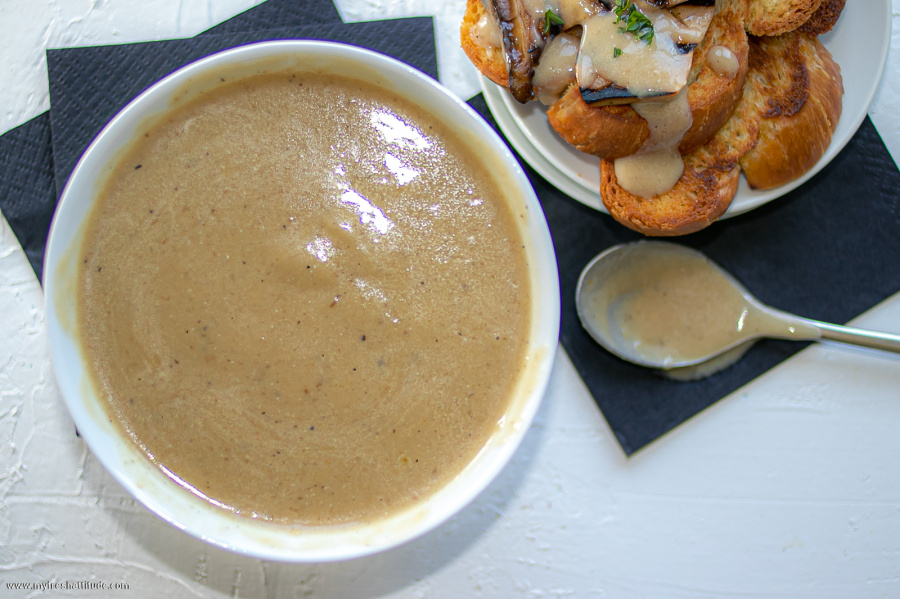
Vegetable Velouté
A vegetable-based velouté is prepared in roughly the same way as making a vegan béchamel sauce. A deeply flavored broth is used in place of the plant-based milk, and the roux mixture made from the oil and flour is cooked a bit longer than it is in preparing the béchamel. Otherwise, the sauces are generally the same.
A properly made velouté should be rich, smooth and lump-free. It should taste of vegetables – or the flavoring ingredient emphasized in the vegetable broth. Traditionally, velouté is ivory or light-colored, but modern creations are often richer in color. A well-made velouté should
Subscription Required For This Content
A vegetable-based velouté is prepared in roughly the same way as making a vegan béchamel sauce. A deeply flavored broth is used in place of the plant-based milk, and the roux mixture made from the oil and flour is cooked a bit longer than it is in preparing the béchamel. Otherwise, the sauces are generally the same.
A properly made velouté should be rich, smooth and lump-free. It should taste of vegetables – or the flavoring ingredient emphasized in the vegetable broth. Traditionally, velouté is ivory or light-colored, but modern creations are often richer in color. A well-made velouté should be thick enough to cling to foods without tasting like the roux used to thicken it.
Velouté preparations play an important role in the vegan kitchen. They can be used to make intensely flavored creamy sauces or as a thickening agent in preparing creamy soups or chowders. Velouté variations are also valuable when making braising liquids to slowly cook vegetables in the oven. The sauce thickens and gracefully clings to the soft and delicate vegetables.
It’s critical to use a strong vegetable broth – ideally one that is homemade. Stock cubes and powders are heavy in the sodium department and taste highly processed; they dominate the tastes and sensations of a velouté and not terribly pleasant while swishing around in the mouth.
The fat plays an important role in the texture and flavor of a velouté; first as a binding agent to the starchy flour, and then as a flavoring component. Unprocessed rapeseed oil is quite viscous and blends nicely with flour to create a homogeneous paste that resists leaking. It also has the added benefit of developing a slight buttery note when heated – a plus for some who miss that particular flavor. Extra virgin olive oil is substitution candidate, but it also tends to leak when heated too long or when acids are added to the mixture. Unprocessed sunflower oil is another option to consider but be aware of the nutty aromas that might be too intensive for a roux thickened soup or sauce.
Like béchamel sauce, velouté is simple to make gluten-free. Replace the flour quantities with half as much starch or gluten-free mixtures and gently cook the sauce until it thickens – usually between 5 and 10 minutes.
Difficulty: simple- to moderate
Yield: makes about 750 ml